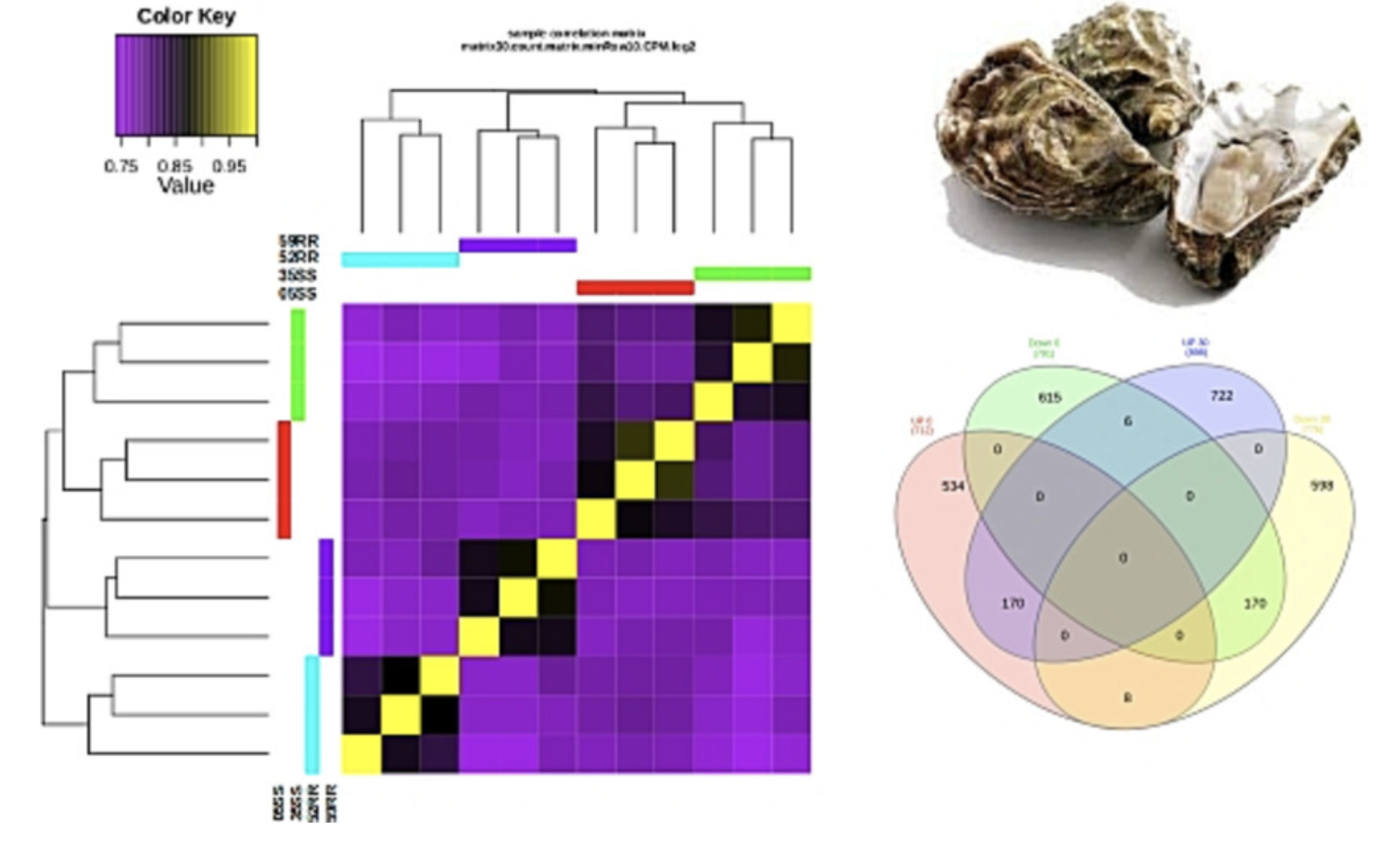Transcriptome profile in heat resilient Pacific oyster Crassostrea gigas families under thermal challenge
Citation
>Arredondo-Espinoza R, Ibarra AM, Roberts SB, Sicard-González MT, Escobedo-Fregoso C. Transcriptome profile in heat resilient Pacific oyster Crassostrea gigas families under thermal challenge. Comp Biochem Physiol Part D Genomics Proteomics. 2023 Sep;47:101089. doi: 10.1016/j.cbd.2023.101089. Epub 2023 May 26. PMID: 37269757.
Abstract
Since the introduction of the Pacific oyster Crassostrea gigas in Baja California Sur, Mexico, its culture has faced environmental challenges, specifically increasing temperatures that result in high mortalities. The inter-tidal zone seawater temperature during a year at the Baja California Peninsula broadly ranges from 7 °C to 39 °C. Therefore, to understand how oysters respond to heat stress during daily temperature oscillations, heat-resistant (RR, father, and mother resistant) and heat-susceptible (SS, both parents susceptible) phenotypes families from a C. gigas breeding program were exposed to a thermal challenge. Based on a laboratory-simulated daily oscillatory thermal challenge (26 to 34 °C) for 30 days, RR phenotype presented differences compared to SS phenotype since the beginning (day 0) of the thermal challenge. Gene expression analyses revealed 1822 differentially expressed up-regulated transcripts in RR, related to functions of metabolic processes, biological regulation, and response to stimulus and signaling. At the end of the experiment (day 30), 2660 differentially expressed up-regulated transcripts were identified in RR. Functional analysis of the genes expressed indicates responses of regulation of biological processes and response to a stimulus. Additionally, 340 genes were differentially expressed among RR vs. SS from the beginning to the end of the thermal challenge, where 170 genes were up-regulated, and 170 were down-regulated. These transcriptomic profiles represent the first report to identify gene expression markers associated with RR phenotypes for the Pacific oyster to the future broodstock selection.
